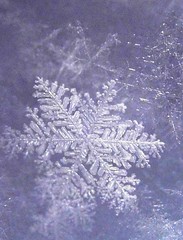As I was winding up my M.A. program at Pacifica Graduate Institute about this time last year, I realized that if I were going to explore the relationship of people with place, I would need to contend with both space and time -- and a big part of the time component had to be the passing of the seasons. I felt the pull to participate in the changing light and temperature, in the ebb and flow of sunrise and sunset that sometimes seems out-of-sync with the official holiday calendar.
Many mornings last January and February, as I was slaving over my portfolio and my final papers, I rose before the sun and saw that "rosy-fingered dawn" beloved of the poets. During the same period, I met Esther de Waal, a scholar and teacher in the Benedictine and Celtic traditions, who makes her home in the Welsh borderlands and visits the U.S. for a few weeks each winter. In her tiny book, To Pause at the Threshold: Reflections on Living on the Border, I found a voice that echoed my own, so much so that I had to quote to Esther something that Gaston Bachelard
wrote about the surprise of finding in another author's pages thoughts so congruent with one's own that they engendered the feeling that one could have, nay should have written that book.

:
We breathe a new air,
No longer cold with seeming death.
The flowers respond
to the strengthening Sun, your light.
So may our hearts respond to your love and grace.
The birds break into song and call us to your praise.
So may our hearts give praise at all aspects of our lives.
The frozen earth and water melt to new life:
So may our hardened hearts be softened
to gentleness and love.
We are overwhelmed with images, symbols,
confirmations of your resurrecting, your enlivening.
 Image from Ancient Order of Hibernians web site at aoh.comAmong those symbols is the perpetual flame of Brighid, relit (in 1993) and tended once again in Kildare, where St. Brighid established her monastery in the 5th century. Not only do the Brigidine Sisters maintain the fire at their center, Solas Bhride, but the county of Kildare has found a home for the flame in the town square and offers it to a new millennium as a beacon of hope, justice, and peace.
Image from Ancient Order of Hibernians web site at aoh.comAmong those symbols is the perpetual flame of Brighid, relit (in 1993) and tended once again in Kildare, where St. Brighid established her monastery in the 5th century. Not only do the Brigidine Sisters maintain the fire at their center, Solas Bhride, but the county of Kildare has found a home for the flame in the town square and offers it to a new millennium as a beacon of hope, justice, and peace.
May the peace of St. Brighid rest on you, enflame your heart for justice, and offer a hopeful reminder that the light has turned and the first signs of spring will show soon.


